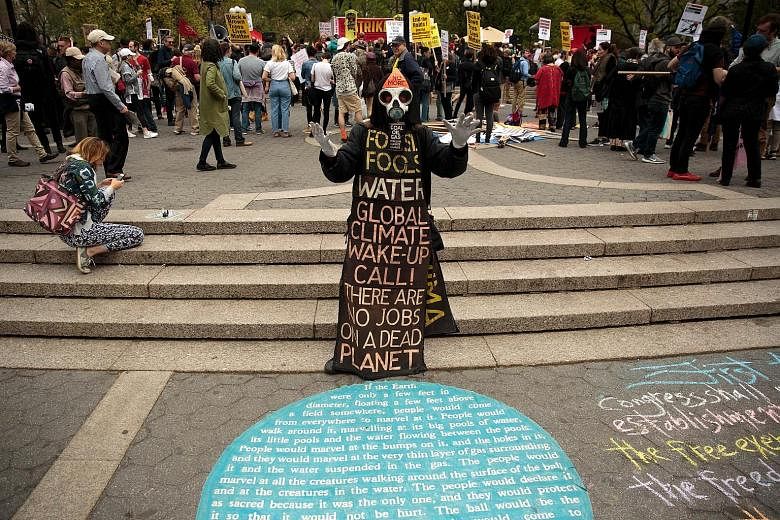As United Nations negotiators meet in Bonn to thrash out rules for implementing the climate-rescue Paris Agreement, the stakes have never been higher. The following are some key climate measures that illustrate the risks of global warming.
1.1 DEGREE CELSIUS
Earth's average surface temperature hit a record level last year for the third straight year since records began in 1880. The global average temperature was 1.1 deg C over pre-industrial levels, and 0.06 deg C above the previous record set in 2015, according to the World Meteorological Organisation.
The 21st century has already seen 16 of the 17 hottest years on record. Arctic summer sea ice shrank to 4.14 million sq km last year - the second lowest after 2012 when it reached 3.39 million sq km. The Arctic Ocean could be ice-free in summer as early as 2030.
At the other end of the world in Antarctica, sea ice also hit its lowest extent ever recorded by satellites at the end of summer. High-altitude glaciers, meanwhile, declined in surface area in 2015 for the 36th year in a row.
400 PARTS PER MILLION
The atmospheric concentrations of the three most potent greenhouse gases - carbon dioxide (CO2), methane and nitrous oxide - all hit new highs last year.
For the first time on record, in 2015, the amount of CO2 in the atmosphere averaged 400 parts per million (ppm).
Most climate scientists agree that greenhouse gas concentrations in the atmosphere must be capped at 450 ppm of CO2 equivalent for a fighting chance at limiting average global warming to 2 deg C over pre-industrial levels. This is the limit enshrined in the 2015 Paris Agreement.
Fossil fuel-generated greenhouse gas emissions are expected to have remained stable last year for the third consecutive year, even as the global economy grew. But to stay on target, they need to decline.
Meanwhile, scientists are warning of an unexplained rise of methane, which has a far more potent warming effect than CO2, in the atmosphere.
70 MILLIMETRES
Sea level rise, caused when ice melts and warmer water expands, continued and appeared to be accelerating, according to a recent report.
The average ocean level was 70mm higher in 2015 than the 1993 watermark, having risen as much as 30 per cent faster in the 10 years to 2015 than in the previous decade.
The pace is likely to pick up further as ice sheets and glaciers shed mass, threatening the homes and livelihoods of tens of millions of people in low-lying areas around the world.
The National Oceanic and Atmospheric Administration said in January that the global average sea level could be between 0.3m and 2.5m higher by 2100. On current trends, the melting Antarctic ice sheet on its own could contribute to 1m of lift, according to one study.
AGENCE FRANCE-PRESSE

